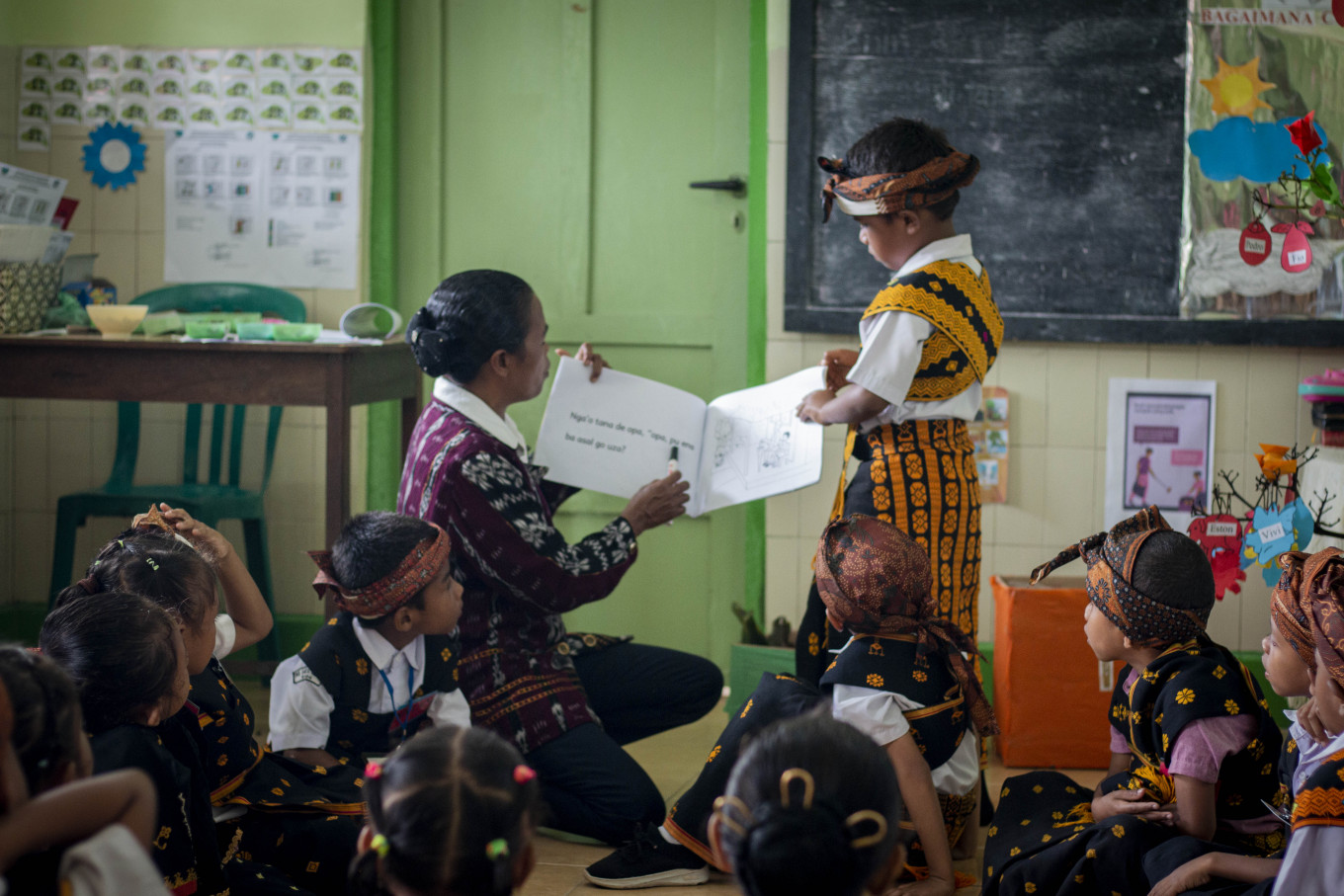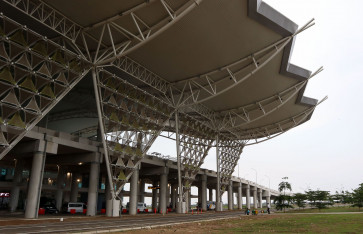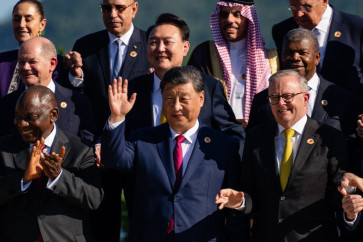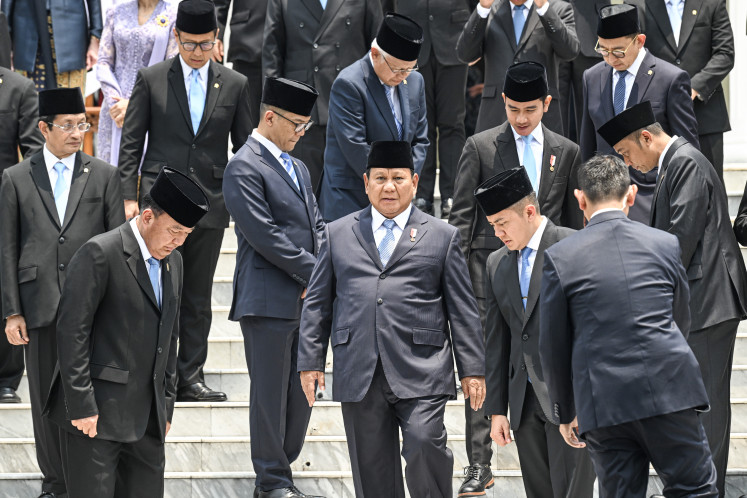Popular Reads
Top Results
Can't find what you're looking for?
View all search resultsPopular Reads
Top Results
Can't find what you're looking for?
View all search resultsTeachers turn to their mother tongue to bridge language divide
Teachers are using local languages at schools in the remote and outlying regions of Indonesia to give their pupils a more considerate learning experience.
Change text size
Gift Premium Articles
to Anyone
D
eep into the winding roads that cut through East Nusa Tenggara’s rocky terrain, 52-year-old teacher Maria Nena, who teaches at a preschool in Nagekeo regency, opened her morning class by greeting her students in the regency’s native language of Nage.
She then began to display hand-drawn pictures of animals and everyday objects in front of the class, as her students eagerly shouted descriptive words of the picture back to her in both Indonesian and Nage.
In a country that has managed to keep its more than 700 unique regional languages alive, this cultural diversity has also posed its own set of problems in education. Some students, particularly those that prefer their native language in day-to-day life, find the transition to schooling in the Indonesian language to be difficult.
“Most of these kids predominantly use the [Nage language]. If I start my lessons in Indonesian, they would not understand it straight away,” Maria told The Jakarta Post on Thursday. “That’s why, for the first semester [of an academic year], I mostly deliver my lessons in Nage, and Indonesian in the second semester.”
Despite her extensive 28-year teaching experience, her intermittent use of both languages was relatively new, she said, and had borne immediate results.
“The response from the students has been great. They show greater camaraderie among themselves and they can connect better with me,” she added.
Fifty-two-year-old Maria “Sinta” Yasinta, who teaches at a state elementary school in the regency, also noted similar improvements among her students after she started using both Nage and Indonesian in her classes.
“Previously, students who were in second or third grade would still struggle to use Indonesian… If I ask them to read [in front of the class], most would shy away, afraid that they would misread the text,” Sinta said.
The language transition approach in Nagekeo was launched in 2021 in by the regency’s administration and the Innovation for Indonesia’s School Children (INOVASI), a government-to-government program between Indonesia and Australia, with the Ambon-based Sulinama foundation providing technical support.
“[Many] students in East Nusa Tenggara found learning in Indonesian as challenging as learning a foreign language, because they were not familiar with it when they started elementary… That’s why we introduced the program to help students transition [into Bahasa Indonesia],” Feiny Sentosa, deputy director of INOVASI, said on Wednesday.
While it is common for teachers across the country to resort to their native tongue when students have difficulty in comprehension, Feiny said that using regional languages in a sporadic manner would not be effective.
“[There is] a systematic and planned approach, we don’t just [encourage teachers] to mix-and-match [the two languages],” she added.
Since the program’s implementation in Nagekeo, students have shown signs of improvement in their literacy skills, according to a 2022 preliminary survey that polled 253 grade one students in Nagekeo’s Boawae district.
The survey showed that without the language transition approach, only 30 percent of students were able to read Indonesian words correctly when they started second grade. But, after its implementation, 73 percent of students were able to by the end of their first year.
This shows the approach could have contributed to the improvement, Fenny said, while also noting that there were other contributing factors.
Head of the Education Ministry’s center for curriculum and learning, Zulfikri Anas, called for more regional administrations, particularly those in the country’s more remote regions where native languages are usually more popular than the national language, to adopt a similar approach.
“This type of approach is more effective and impactful to the students,” he said on Thursday. “It’s more important that students are able to grasp the concept [of a lesson] than the language [it is delivered in].”










